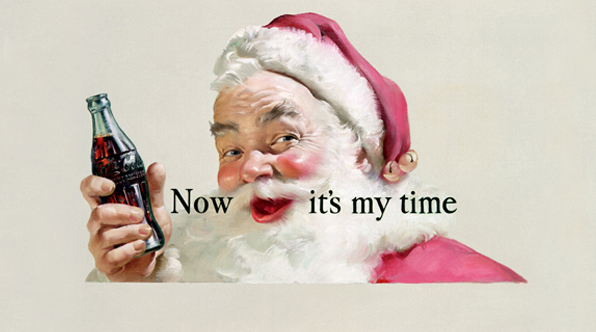What does Christmas have to do with Corporate Identity? Who is this Father Christmas? What is the difference to Saint Nicholas? And what part does Coca Cola really play in this story? These are questions that we, as specialists in terminology and corporate identity, urgently need to get to the bottom of.
Terminology of Christmas
Who is Father Christmas and who is Saint Nicholas? And who is Santa Claus? What does the Christ Child have to do with it? In the interests of technically correct and linguistically consistent reporting, a clear definition of Christmas terminology is of crucial importance:
Gift messenger: A bearer of gifts. At Christmas time, a gift messenger traditionally appears as Saint Nicholas, the Christ Child or Father Christmas. Another established term is “gift-bearers”. However, with the aim of a uniform use of terminology, “gift messenger” is defined as the preferred term and “gift-bearer” as the deprecated term. Gift messenger is therefore a generic term for Saint Nicholas, Christ Child and Father Christmas, for example.
Saint Nicholas: Gift messenger, which has its origin in the legends around St. Nicholas of Myra. He was a bishop who generously distributed his wealth among the poor in the fourth century. Already in the Middle Ages, the custom of giving gifts to children on the eve of St. Nicholas Day (December 6) was established. St. Nicholas enjoyed great popularity until the 16th century, when the Reformation rejected the worship of the saints.
Christ Child: Gift messenger in reference to Baby Jesus. The tradition that the Christ Child brings the gifts on Christmas is probably due to Martin Luther, in the replacement of Saint Nicholas. This was accompanied by the change of the date of the gift-giving to the 25th of December, the feast of the birth of Jesus Christ, or the previous evening.
Santa Claus: A gift messenger who originated in Christmas stories in the USA in the 19th century. He can be traced back to the figure of St Nicholas, but cannot be equated with him. European emigrants brought the custom of Saint Nicholas to the USA, where it was taken up in poems and stories. The poem “The Night before Christmas” by Clement Clarke Moore and the caricatures by German-American Thomas Nast for the magazine Harper’s Weekly are worth mentioning. Nast portrayed “Santa Claus” as an old, bearded, kind man, giving gifts to brave soldiers. When he was supposed to paint the figure, he chose red and white. The foundation was laid for the red-and-white, bearded Santa Claus, in German “Weihnachtsmann”.
Corporate Christmas: The role of Coca Cola
And what about the myth that Coca Cola invented Santa Claus?
The truth is: Coca Cola did not invent Santa Claus, but contributed significantly to its global image.
They took up the figure of Santa Claus in an advertisement for the first time in 1920 and have since propagated it worldwide.

Terminology process for Christmas - easily done with AI!
Creating consistent and unambiguous terminology for Christmas can be a hurdle. The inconsistent use of potential terms, the inconsistency of data formats – from Bible texts to Christmas carols and advertising copy – and even the volume of such data – all of this could create challenges in a conventional terminology process. With AI-based approaches, blc could make the terminology process for Christmas much easier and more efficient!
First, we would systematically collect the potentially relevant terms, such as “Santa Claus”, “ Father Christmas” or “St. Nicholas”, from texts using automated terminology extraction. In addition to traditional statistical approaches, blc also uses AI-supported methods, for example to capture additional rare or context-dependent terms.
In the next step, AI helps to validate these terms by analyzing large amounts of data and highlighting potential errors or inconsistencies – a huge relief for terminologists.
Finally, AI can be used to create precise and contextualized definitions. By integrating databases of Christmas poems and stories into a retrieval-augmented generation (RAG) process, the terminology management will be much faster – and with much less effort.
Of course, we can support you not only with such exciting projects as the creation of Christmas terminology, but also with far more complex projects. Simply get in touch with us!
Conclusion: Corporate Identity? How to do it!
What does this Christmas story teach us? For Coca Cola, it was a clever move to bring Santa Claus into the world in their advertising. Nowadays, many people think that Coca Cola invented Santa Claus. What could be better brand advertising?
This does not mean that other companies have to reinvent Santa Claus. There are also other effective ways to shape the corporate identity:
- Uniform source texts through the use of authoring systems
- Company-wide terminology management
- Uniform target texts through the use of CAT tools.





